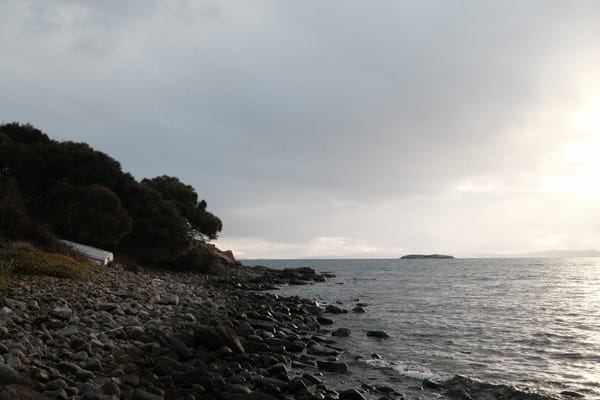Still, Like Air, I'll Rise
There is a sea change in the Ōtautahi arts scene. This city feels a lot more like home than it did when I left over a decade ago, and on every visit since. Suddenly, Christchurch feels possible.
Written on commission for Un Projects in August 2017.
The Physics Room Ōtautahi/Christchurch 22 July - 27 August 2017
Artists: Hannah Brontë, Skawennati, Esther Ige, Lisa Reihana, Salote Tawale and Leafa Wilson & Olga Krause
Curators: Abby Cunnane and Charlotte Huddleston
There is a sea change in the Ōtautahi arts scene. I can only speak to some of it, being Pākehā, but there is definitely change afoot and space is being made. This city feels a lot more like home than it did when I left over a decade ago, and on every visit since. I’m hearing the same from others who have moved or moved back, especially from those also marginalised in some way - suddenly, Christchurch feels possible.
A big part of that, for myself and others, is the space and representation being given to marginalised voices in the arts community. Space both physical and metaphorical. Programming like Still, Like Air, I’ll Rise [SLAIR] is a prime example.
Its name taken from Maya Angelou’s famous poem Still I Rise, SLAIR was curated by Abby Cunnane and Charlotte Huddleston and exhibited at St Paul Street in Auckland earlier this year. Bringing exhibitions like this - of works by women of colour, steeped in decolonial politics - to Christchurch is essential. Ōtautahi has a reputation for being very white and very conservative. While sometimes well deserved, I feel people often forget that this city is also home to a large Māori and Pasifika population, one largely situated in the eastern suburbs that suffered the most in the quakes.
The first thing you see when entering The Physics Room’s install of SLAIR is Hannah Brontë’s gorgeous banner, Welcome to the matriarchy (2016) quickly followed by honestly one of my favourite recent works, her fantastic Still I Rise (2016) video. Still I Rise, with its catchy and direct points about what decolonial politics should look like is, I think, exactly what the world needs. This is especially true for New Zealand, with our general election coming up in a few weeks.
On opening night, entering the main space at the end of the hallway, you were met with Leafa Wilson & Olga Krause’s performance and installation Unprotected #2: This ain’t no disco (2017). The second in the iteration (first appearing at the St Paul St installation) Unprotected is about reclaiming safety, and literally reclaims space within the white cube of the gallery by erecting a tent-like structure. The shelter is quickly contrasted with a punishing, durational performance in which Wilson & Krause dance barefoot on the concrete floor, dripping blood, lit by a disco light, occasionally bending to tear pages out of an issue of October and Hans Ulrich Obrist’s A Brief History of Curating. Two hours later, she finally stops and takes refuge in the tent. The tent, her bloodied dress, and the torn pages remain on the gallery floor.
The other end of the main gallery space is filled with works that seem to reach across the room to speak to each other. Esther Ige’s installation Even though (2017) is composed of a rope hanging from the ceiling, coiling on the floor, an archival recording of the Selma to Montgomery March, and a digital video containing some of her poetry:
“And even though bitter thoughts were strung, strung into cords that tried to tighten “And harsh thoughts turned into harsh hands upon their skin
“Their skin thickened
Bookending Ige’s installation are Salote Tawale’s two video works, Pocari Sweat (2014) and Sometimes you make me nervous and then i know we are supposed to sit together for a long time (2017). Both works draw on stereotypes and both works utilise Tawale’s own body to confront those stereotypes by reproducing them as self-portraits, reclaiming ownership and agency.
In an adjacent room is Skawennati’s video series, TimeTravellerTM (2008–2013). In these nine episodes Skawennati highlights and embodies indigenous history through the narrative of an indigenous time traveller based in 2121. Looking both to the past and future, Skawennati focusses on representation, bringing events from indigenous history into the present and creating an indigenous presence in the future. She writes:
“I was thinking about native people and our presence [in cyberspace], and our lack of presence in the future and how people don’t see us in the future. Even we native people don’t seem to see ourselves in the future. It seems to me that we keep longing for the past.[1]
Created over six years within the virtual world Second Life, the technology and graphics already feel dated, adding another layer to the temporality of the work.
Returning to the larger space we come across Lisa Reihana’s Wog Features (1990). Seventeen years later the video still feels painfully relevant, calling to how often we still see Gollywogs on shelves, calling to still-prevalent pop culture stereotypes like Chris Lilley’s Jonah from Tonga (rightfully pulled from Māori Television earlier this year, to much uproar). Looking back to Ige’s installation and Skawennati’s videos in particular, the realities of white supremacy in the States and at home right now feel very, very tangible. Still, Like Air, I’ll Rise is a necessary and relevant antidote.

